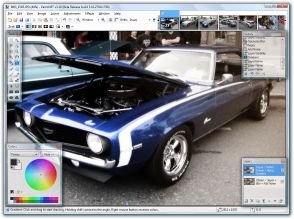I was trying to get Outlook 2007 to sync with my Google calendars. For those who don’t know, doing this takes a few quick steps:
- Go to your Google Calendar page.
- Under the My Calendars section on the left, click the down-arrow next to the calendar you want to sync, and select Calendar Settings.
- At the bottom, click the ICAL button in the Private Address line.
- Copy the URL provided to the clipboard.
- Open Outlook 2007 and go to Tools / Account Settings.
- Click the Internet Calendars tab, then click New.
- Paste the URL you copied in step 4 into the box and click Add.
- Finish as prompted.
Easy enough, and I was able to sync my personal Google calendar (linked with my bdemarzo@gmail.com account) this way. However, when I tried my hosted Google calendar (linked with bdemarzo@computersims.com), step 7 would fail; Outlook said it wasn’t a recognized calendar format.
The problem is that Outlook apparently has an issue with calendars hosted via HTTPS, and may have an issue with the email address in the URL to your calendar.
Consider the private URL to my personal Google calendar (hosted with my plain vanilla GMail account).

Now, consider the private URL to my hosted domain Google calendar (i.e. my computersims.com account).

When pasting the calendar address for a hosted domain Google calendar account into Outlook, you need to do the following:
- Change the protocol from HTTPS to HTTP.
- Replace the %40 symbol in the email address to the at symbol @.
As a result, this…
https://www.google.com/calendar/ical/bdemarzo%40gmail.com/private-0123456789ABCDEF0123456789ABCDEF/basic.ics
…becomes this:
http://www.google.com/calendar/ical/bdemarzo@gmail.com/private-0123456789ABCDEF0123456789ABCDEF/basic.ics
Note the emphasized sections are the only ones changed. Do this, and Outlook 2007 reads your hosted Google calendar fine!
Of course, this is all a one-way sync — you can’t add things to your Google calendar from Outlook — but it’s better than nothing at all.



 Paint.NET is a free, open source image editing application for Windows. It has a
Paint.NET is a free, open source image editing application for Windows. It has a 




